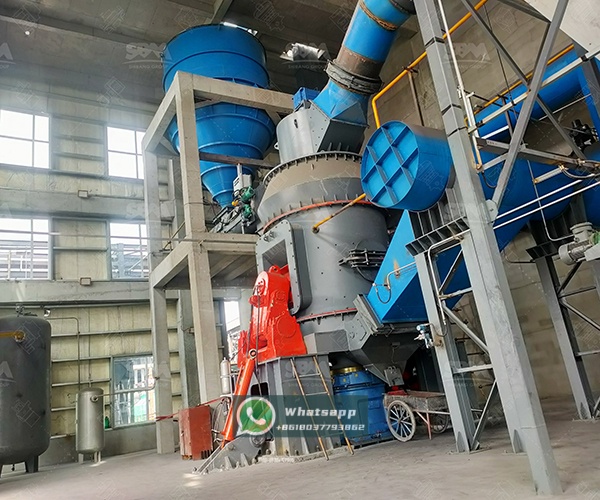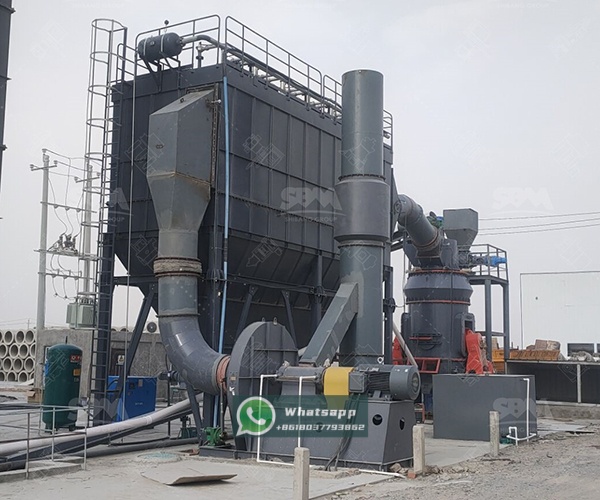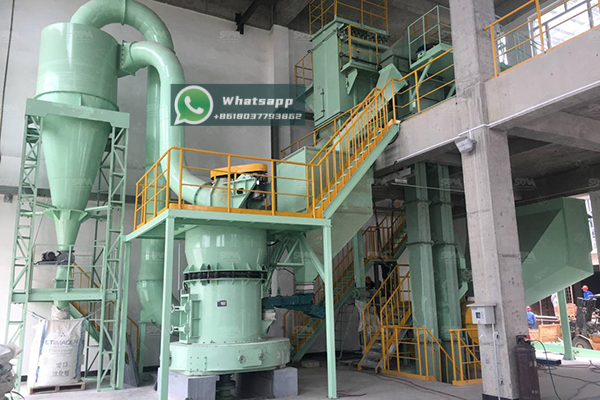The cement industry is perpetually evolving, driven by the dual demands of enhancing production efficiency and meeting stringent environmental regulations. A key component in modern cement production is pozzolana, a siliceous or siliceous and aluminous material which, in itself, possesses little or no cementitious value but will, in finely divided form and in the presence of moisture, chemically react with calcium hydroxide at ordinary temperature to form compounds possessing cementitious properties. The efficient grinding of pozzolana is therefore a critical process, and vertical roller mills (VRMs) have emerged as the technology of choice for this application.

Pozzolanic materials, such as fly ash, volcanic ash, and calcined clay, are increasingly used as supplementary cementitious materials (SCMs). Their incorporation reduces the clinker factor in cement, leading to significant reductions in CO2 emissions and energy consumption per ton of cement produced. However, these materials often present unique grinding challenges. They can be abrasive, vary greatly in moisture content, and require a very fine and consistent particle size distribution to maximize their reactivity in the cement blend.
Traditional grinding systems, like ball mills, have been used for decades but often suffer from high energy consumption, large footprint, and difficulty in controlling the final product fineness with the precision required for optimal pozzolanic activity. This is where the technological advantages of Vertical Roller Mills become overwhelmingly apparent.
Vertical Roller Mills offer a fundamentally superior design for processing pozzolanic materials. Their core principle involves a bed of material being compressed between a rotating grinding table and rollers. This mechanism is far more energy-efficient than the impact and attrition-based grinding in a ball mill. The key benefits include:

Selecting the right equipment is paramount to unlocking these benefits. Shanghai Zenith Machinery Co., Ltd., an excellent manufacturer of ore and industrial grinding equipment, has made great achievements in the field of ultra-fine powder grinding. Our expertise is perfectly aligned with the demands of the modern cement industry.
For pozzolana grinding applications, we highly recommend our LM Vertical Grinding Mill. This mill is engineered to integrate five functions—crushing, grinding, powder selection, drying, and material conveying—into a single, robust, and efficient machine. It is specifically designed to handle non-metallic minerals like pozzolana, offering an eco-friendly and highly economical production solution.
The LM Vertical Mill series is renowned for its reliability and performance. Below are the technical parameters for the mineral grinding series, which is perfectly suited for processing pozzolana to the required fineness for cement blending:
| Model | Plate diameter (mm) | Capacity (t/h) | Output fineness (μm) | Max feed size (mm) | Main motor (kW) |
|---|---|---|---|---|---|
| LM130K | 1300 | 10-28 | 170-40 | <38 | 200 |
| LM190K | 1900 | 23-68 | 170-40 | <45 | 500 |
| LM280K | 2800 | 50-170 | 170-45 | <50 | 1250 |
For producers seeking even finer product grades to unlock ultra-high pozzolanic reactivity, our LUM Ultrafine Vertical Mill presents an advanced alternative. It builds upon the robust foundation of the LM series while incorporating cutting-edge classifier technology to achieve product fineness in the range of 5-30 microns (D97). Its intelligent control system ensures stable operation and easier maintenance.
The adoption of pozzolanic materials is a cornerstone of the cement industry’s path towards sustainability. To fully capitalize on their benefits, efficient and reliable grinding technology is non-negotiable. Vertical Roller Mills, particularly the LM series from Shanghai Zenith, provide a proven, energy-saving, and environmentally friendly solution tailored to the specific challenges of pozzolana processing.
By investing in such advanced technology, cement producers can not only improve their bottom line through reduced energy costs and higher production rates but also significantly lower their carbon footprint. This aligns perfectly with global efforts to create a more sustainable built environment. Shanghai Zenith is committed to providing the equipment and expertise necessary to make this transition a success.
